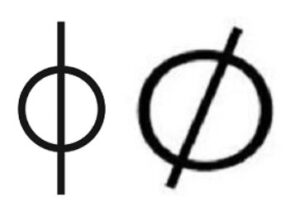On 14 July 2021 the General Court (The Court) issued a decision in a matter between Cole Haan LLC (Cole Haan) and the Danish clothing company Samsøe and Samsøe Holding A/S (Samsøe and Samsøe) in the case T-399/20. The Court found the trademark applied for by Cole Haan consisting of the letter ‘Ø’ from the Danish alphabet confusingly similar to the earlier trademark registration of Samsøe and Samsøe consisting of the letter ‘ϕ’ from the Greek alfabet and Cyrillic alphabet (used in the Bulgarian language).

The application by Cole Haan had initially been rejected by the opposition division on the basis of likelihood of confusion. A decision which were upheld by the Board of Appeal. In its decision the Board of Appeal assessed the likelihood of confusion from the point of view of the French-speaking general public with no knowledge of Danish, Bulgarian or Greek and displaying an average level of attention. It found that the goods at issue are identical or similar (clothing in class 25 and bags in class 18), the signs at issue are visually similar to a high degree and no phonetic or conceptual comparison of those signs is possible. It added that the distinctive character of the earlier mark is low for the majority of the French-speaking public and that, given the way in which the goods in question are marketed, the visual similarity of the signs should carry greater weight in the assessment of the likelihood of confusion.
The Court found that visually the letters, although not completely identical, are very similar. The Court also agreed with the Board of Appeal that a phonetic comparison could not be made, since neither sign have any meaning for the majority of the French-speaking public, and the signs will therefore not be verbalized. In this respect the Court stated that since the letters in question are not used in French this means that from the point of view of the French-speaking public, those letters belong to foreign languages.
The Court stated that according to case-law, knowledge of a foreign language cannot, in general, be assumed. Furthermore, the Court on this basis concluded that knowledge of the existence of a letter of the alphabet specific to a foreign language can also not be assumed. Consequently a conceptual comparison could therefore not be made.
In conclusion, and on the basis of the French-speaking public’s lack of knowledge of letters from other European alphabets, the letters ‘ϕ’ and ‘Ø’ were found confusingly similar with reference to the visual similarity only – despite the very simplistic nature of the marks (being circles bisected by a straight line).
_____________________________
To make sure you do not miss out on regular updates from the Kluwer Trademark Blog, please subscribe here.


